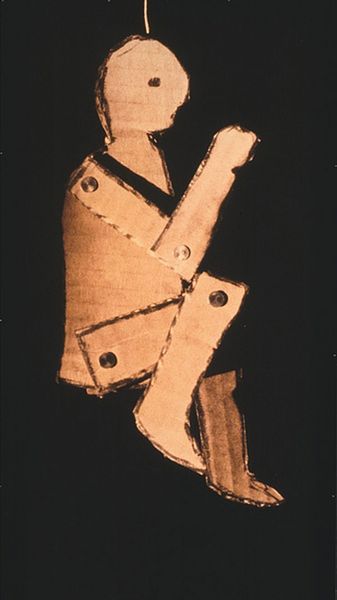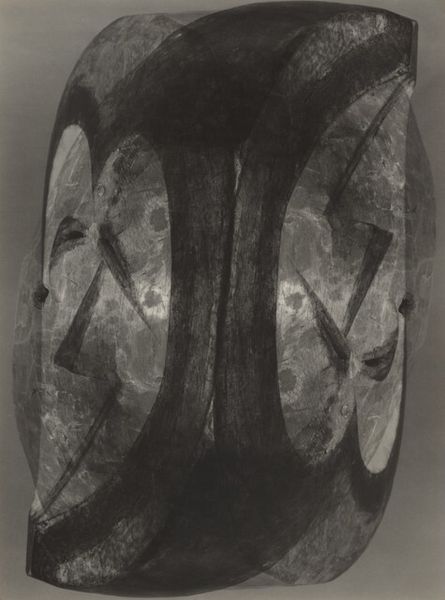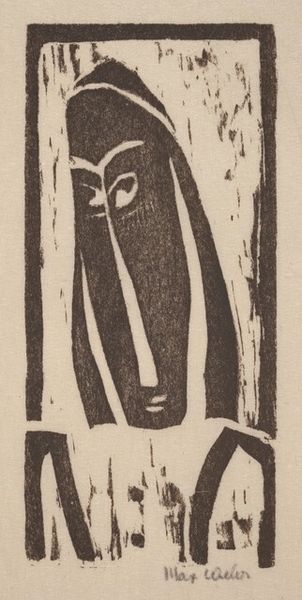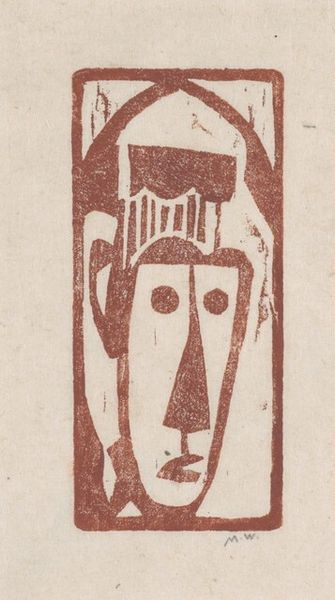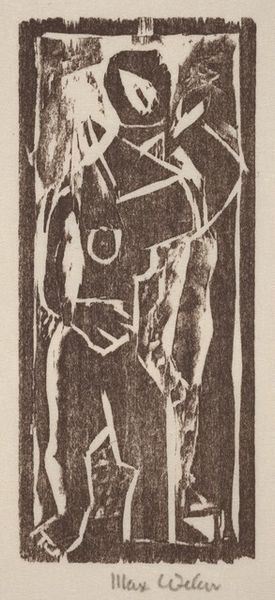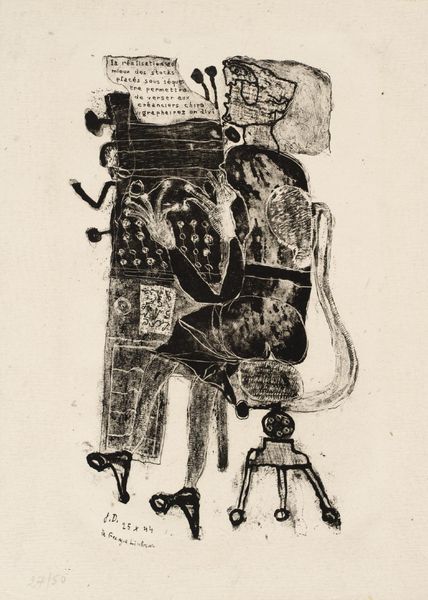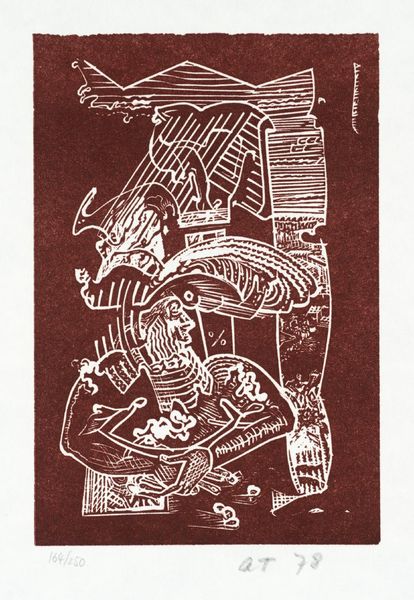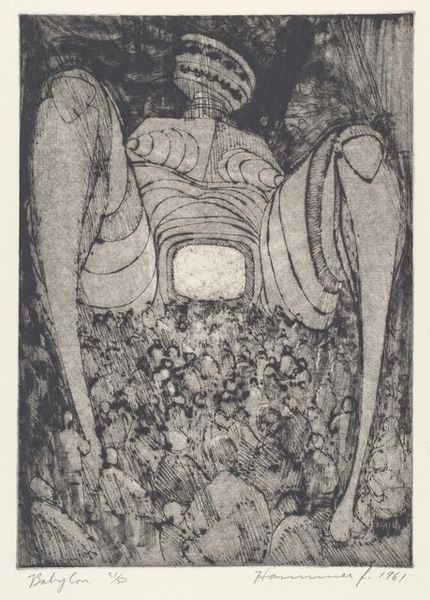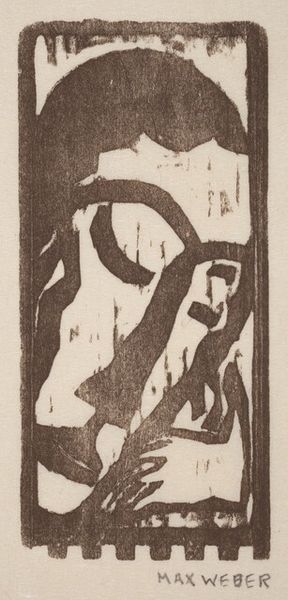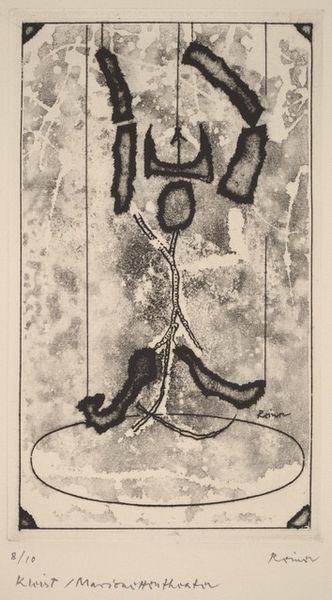
Dimensions: unconfirmed: 775 x 580 mm
Copyright: © The estate of André Bicât | CC-BY-NC-ND 4.0 DEED, Photo: Tate
Editor: This is André Bicât's "Shadows," and though undated, it's held at the Tate. The bold blacks create a complex abstract form. I find it rather haunting. What do you make of this piece? Curator: It does possess a certain brooding quality, doesn't it? To me, it feels like a glimpse into the subconscious. The stark contrasts might suggest a struggle between light and darkness, or perhaps the visible and the hidden aspects of ourselves. It reminds me of a dream, fragmented and symbolic. Editor: So, do you think the title "Shadows" is literal, or more metaphorical? Curator: I think Bicât is inviting us to contemplate the shadows within ourselves, the parts we often keep hidden. The beauty of abstraction is its openness to interpretation. What do you think? Editor: I didn't think about it that way initially. It is kind of exciting to consider! Curator: Art should stir something within us, shouldn't it?
Comments
Join the conversation
Join millions of artists and users on Artera today and experience the ultimate creative platform.
tate 6 months ago
⋮
Shadows is part of a portfolio of prints titled Rhythms. This text discusses the group of works (P11757-P11763) as a whole. Rhythms is a portfolio of seven etchings made in 1965 and printed on off-white wove paper. Each print was made in the artist's London studio in an edition of twenty-five. Bicât retained only two complete suites containing the first and second imprints, and this portfolio contains the first set of imprints. His decision to create the two portfolios at great expense at a time when money was short is evidence of their importance to him. The artist felt that although the prints could be sold separately they had been created as a suite and they should be viewed as such. Throughout his life Bicât remained pleased with the two portfolios. He never parted with either edition and both have remained in the hands of the family until his children presented this portfolio to Tate in 2001. The seven etchings refer to music and can be read as analogies for the various movements within a symphony or concerto. Music was a major feature in Bicât's life, and his wife had been a concert pianist. The artist, who would frequently make connections between music and art, tended to listen to music as he worked. His daughter Tina Bicât remembers his studio resounding to the music of Béla Bartók (1881-1945) during what was a period of emotional turmoil for her father. The images in the portfolio are dreamlike, almost nightmarish, and they apparently refer to the unsettling dreams Bicât was having at this point. He worked intensely on these plates, devoting himself to nothing else until they were completed. They are strongly worked and one has a sense of the physical exertion of the artist in the deeply bitten line. The plates became almost like reliefs and bear comparison with his sculptures. This link is made explicit in the four prints made with shaped plates, which echo the sculpted heads he was making at the time. Bicât's talent for, and understanding of, the technique of etching led to his appointment as tutor in this subject at the Royal College of Art, London, in 1966, a post he held until 1974. Chloe Johnson and Giorgia BottinelliFebruary 2002


